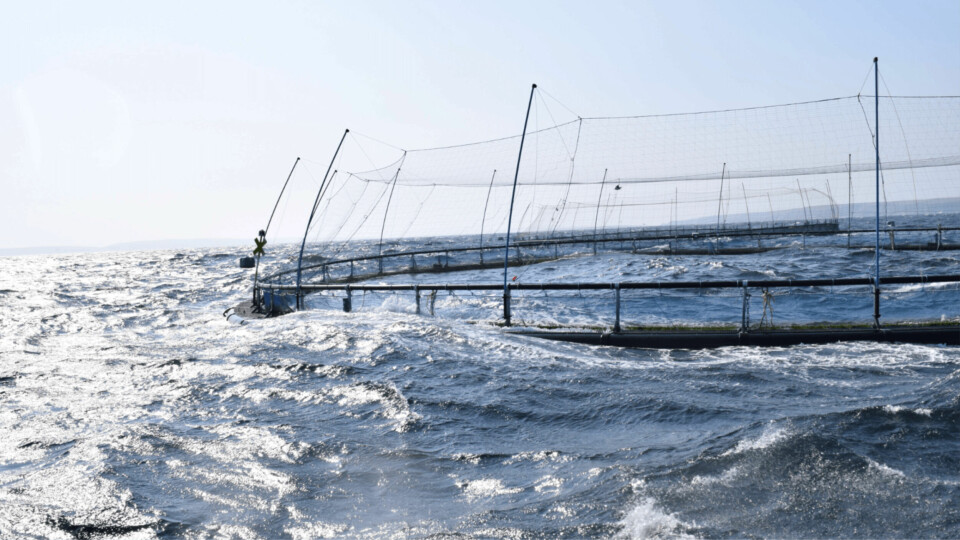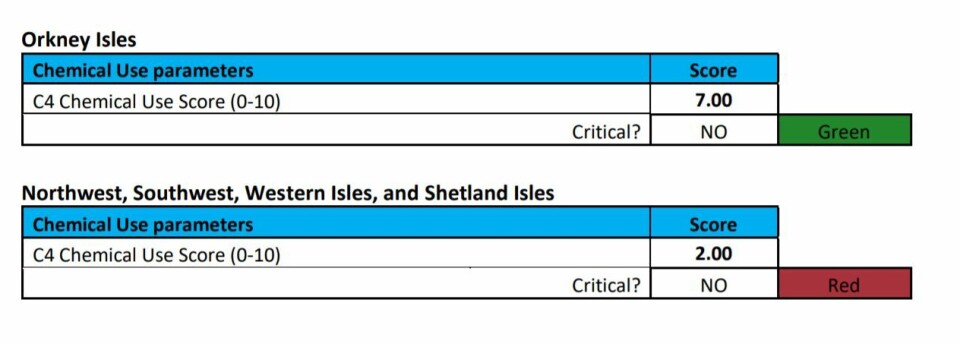
Lice medicines and escapes keep most salmon farms off Seafood Watch menu
Uncertainty in the degree of impact resulting from interactions between farmed and wild salmon and sea trout continues to be a key characteristic of the industry’s development in Scotland, according to the latest assessment of the sector by the US-based Monterey Bay Aquarium Seafood Watch programme, which evaluates the ecological sustainability of wild-caught and farmed seafood commonly found in the United States marketplace.
The report, which rates salmon production on 10 criteria, says salmon farms have not caused the widespread declines in wild salmonid populations seen in areas with and without salmon farming, but adds that any substantial contributions to their local declines or inhibitions of their recovery must be considered.
Seafood Watch says that while salmon farm nutrient waste discharges have increased as the industry has grown, it is unlikely that they would lead to a detectable change in amounts of phytoplankton, or appreciably perturb the balance of organisms.

‘Avoid’ recommendation
Both the availability of data about the industry and the habitat provided for farmed fish score well in the assessment.
However, Seafood Watch recommends that consumers avoid Atlantic salmon from four of Scotland’s five salmon farming areas, along with most of the salmon produced in net pens in other areas around the world. In Scotland, this is largely due to use of medicinal lice treatments, the potential for disease outbreaks to spread to wild fish and the number of fish escapes and potential introgression with wild salmon.
Seafood Watch rates farmed salmon under four categories - Best Choice, Certified, Good Alternative, and Avoid – and only salmon grown in recirculating aquaculture systems with wastewater treatment receive the Best Choice rating.
ASC fish ‘a good alternative’
But salmon certified by the Aquaculture Stewardship Council (ASC) – which now includes fish from some sites on the Avoid-rated west coast of Scotland – are a recommended alternative.
“Seafood Watch conducted an eco-certification benchmarking study to identify which standards are consistent with our sustainability criteria. We identified the ASC standard as equivalent to at least our yellow ‘Good Alternative’ recommendation,” states Seafood Watch on its website.
Salmon production areas that have the Good Alternative recommendation – “Buy, but be aware of concerns” – are Orkney, the Magallanes region of Chile, the Faroes, the US state of Maine, Nova Scotia and three of Norway’s 13 production areas: the most southerly (Swedish border to Jæren) and most northerly (west and east Finnmark).
Salmon produced in other net pen locations in Scotland, Norway, Chile and Canada are given an Avoid rating.
Poor performance
On a scale of 0 to 10, where 0 indicates very poor performance by Seafood Watch’s criteria, Northwest and Southwest Scotland both had a final score of 1.73, the Western Isles 1.44 and Shetland 3.47. Orkney’s score was 5.19.
Seafood Watch said its assessment of Scottish salmon production covered effluent, habitats, wildlife mortalities, chemical use, feed production, escapes, introduction of secondary species (other than the farmed species), disease, the source stock, and general data availability
In the executive summary of the 138-page report, Seafood Watch points out that while there is a large amount of data readily available on salmon farming in Scotland, there are often substantial delays of more than a year in some datasets (noting the difficulties caused by a cyber-attack of SEPA in late 2020). Some of the information Seafood Watch relies on dates back to 2018 report, and production data are from 2019.
Complex regulations
Seafood Watch says the regulatory system is complex and challenging to understand fully, and although Salmon Scotland (formerly the Scottish Salmon Producers’ Organisation) is open with data, some can be unwieldy to analyse and/or in some cases heavily aggregated.
On disease, Seafood Watch says bacterial and viral pathogens infect farmed salmon in Scotland and their on-farm presence represents a reservoir of potential spillback to wild organisms, although their beyond-farm impact appears low yet, if uncertain, possibly due to the challenges of detecting diseased wild fish.
In contrast, sea lice were a recognised concern.
“While sea lice are not considered to be responsible for the long-term declines in wild salmon and sea trout (and there are many ongoing non-aquaculture pressures on the populations), there is a concern that the added pressure of sea lice transmission from salmon farms is a significant impactor on the health and recovery of wild salmonid populations,” says Seafood Watch.
Read the full report here.





















































